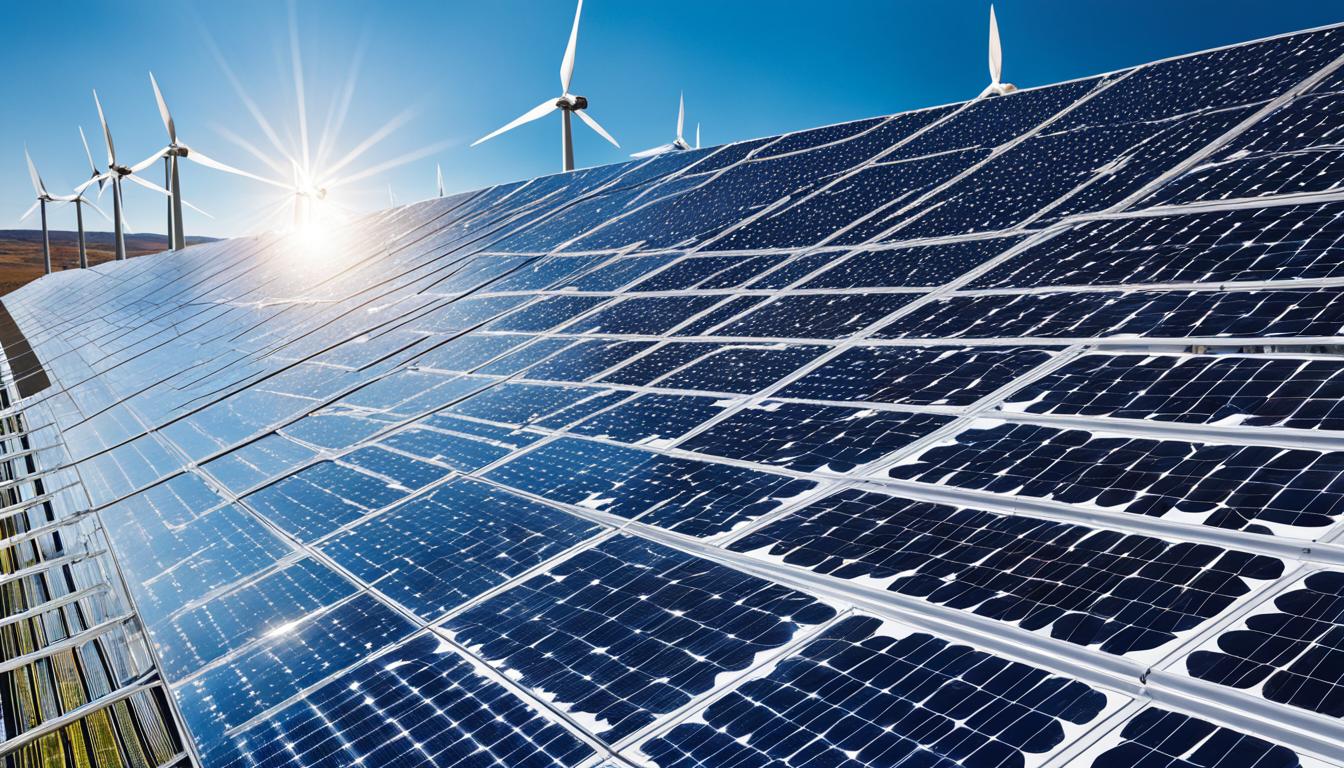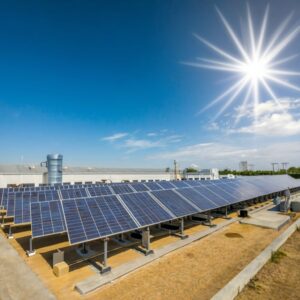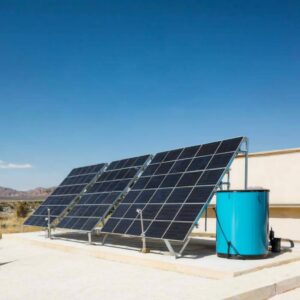
Welcome to my comprehensive guide on solar cells, where I will delve into the fascinating world of photovoltaic technology. In this PDF guide, you will find detailed insights and valuable information about solar cells, their functionality, and the latest advancements in this field. Whether you are a professional in the industry or simply curious about solar energy, this guide has something for everyone.
Solar cells play a pivotal role in harnessing the power of the sun and converting it into clean, renewable energy. As the demand for sustainable solutions grows, understanding the intricacies of solar cell technology becomes increasingly important.
To help you gain a deeper understanding, this technical guide will cover various aspects of solar cells, including their working principles, different types of solar cells, efficiency factors, and much more. You will also find valuable insights into emerging trends and future prospects of solar cell technology.
Key Takeaways:
- Learn about the fundamentals and working principles of solar cells.
- Discover the different types of solar cell technologies and their applications.
- Explore the factors that affect the efficiency of solar cells.
- Stay up-to-date with the latest advancements and trends in photovoltaic technology.
- Understand the importance of solar energy in creating a sustainable future.
Incorporation Mechanism of Potassium in FAPbI3 Perovskite Solar Cell Materials
Researchers have conducted a detailed study on the incorporation mechanism of potassium (K+) in the FAPbI3 perovskite layer of solar cells. The incorporation of potassium in perovskite solar cell materials has significant implications for improving their power conversion efficiency.
K+ ions present in the perovskite layer lead to several beneficial effects. Firstly, the incorporation of potassium results in higher power conversion efficiency, enabling the solar cells to convert a greater percentage of incoming sunlight into electricity. This enhancement in efficiency is attributed to the lower trap density and faster charge transfer facilitated by K+ ions.
Another advantage of K+ incorporation is the elimination of I-V hysteresis in perovskite solar cells, which refers to the difference in current response depending on the direction of the applied voltage. Eliminating hysteresis is crucial for ensuring consistent and reliable performance of solar cells.
However, it is important to note that the stability of the perovskite layer is affected by the incorporation of potassium. The increased mobility of charge carriers and the passivation of deep-level charge traps contribute to improved efficiency, but may compromise the long-term stability of the perovskite layer.
Density functional theory (DFT) calculations have provided valuable insights into the incorporation mechanism of potassium in FAPbI3 perovskite solar cell materials. The main source of improved performance associated with K+ incorporation has been attributed to the formation of KFA antisite defects.
These findings have significant implications for the future design and optimization of high-efficiency and stable mixed-perovskite solar cells. By understanding the role of potassium incorporation and its impact on the performance and stability of perovskite solar cells, researchers and engineers can further enhance the potential of this promising photovoltaic technology.
Stay tuned for the next section, where we will explore the challenges and future prospects of incorporating potassium in perovskite solar cells.
Conclusion
The increasing demand for energy efficiency has led to the emergence of innovative technologies in various industries, including the air conditioning and solar cell sectors. Companies like Evercloak are at the forefront of developing sustainable solutions that address the pressing need for energy-efficient technologies. Their HVAC technology, which reduces air conditioning energy demands by half, represents a significant step towards achieving greater energy efficiency in cooling systems.
In the realm of solar cell technology, researchers have made exciting progress in improving power conversion efficiency through the incorporation of potassium (K+) in FAPbI3 perovskite solar cells. The presence of K+ ions in the perovskite layer has been found to enhance power conversion efficiency, lower trap density, and facilitate faster charge transfer. However, stability concerns associated with K+ incorporation in perovskite solar cells need to be carefully addressed before widespread adoption can be realized.
To achieve sustainable and efficient energy solutions, continued research and development in solar cell technology will be crucial. By focusing on optimizing the stability and performance of K+-incorporated solar cell materials, scientists can contribute to meeting the growing global energy needs in a sustainable manner. Future advancements in solar cell technology will play a pivotal role in driving the transition towards a more sustainable and energy-efficient future.
FAQ
What is Evercloak’s HVAC technology?
Evercloak’s HVAC technology is a groundbreaking innovation that reduces the energy demands of air conditioning by half. It achieves this by developing graphene composite membranes that can dehumidify air and improve energy efficiency.
Who led the funding round for Evercloak?
The funding round for Evercloak was led by Bioindustrial Innovation Canada, with participation from Greensoil Ventures, Groundbreak Ventures, Ontario Centres of Innovation, and angel investors.
How significant is the energy use of air conditioning globally?
Air conditioning alone accounts for 10 percent of global energy use, highlighting the growing need for energy efficiency in cooling systems.
What were the results of Evercloak’s field trials?
Field trials conducted in 2023 showed promising results for Evercloak’s membrane-based solution, paving the way for the company to bring their technology to market.
What did researchers study regarding perovskite solar cells?
Researchers studied the incorporation of potassium (K+) in the FAPbI3 perovskite layer of solar cells to assess its impact on power conversion efficiency and stability.
What are the improvements observed with potassium (K+) incorporation in perovskite solar cells?
The incorporation of K+ ions in the perovskite layer leads to higher power conversion efficiency, lower trap density, and faster charge transfer. It also eliminates the I-V hysteresis in perovskite solar cells.
What are the challenges associated with potassium (K+) incorporation in solar cells?
While K+ incorporation improves efficiency, it reduces the stability of the perovskite layer. Continued research and development are necessary to address this challenge for widespread adoption of K+-incorporated solar cell materials.
What insights did density functional theory (DFT) calculations provide regarding K+ incorporation in perovskite solar cells?
Density functional theory (DFT) calculations revealed that KFA antisite formation is the primary source of improved performance in K+-incorporated perovskite solar cells.
How is Evercloak contributing to sustainability and energy efficiency?
Evercloak is pioneering HVAC technology that reduces energy demands in air conditioning, addressing the growing need for energy-efficient solutions and supporting sustainability efforts.
Why is continued research and development essential for solar cell technology?
Continued research and development are necessary for advancing solar cell technology to meet the increasing global energy needs in a sustainable way.








